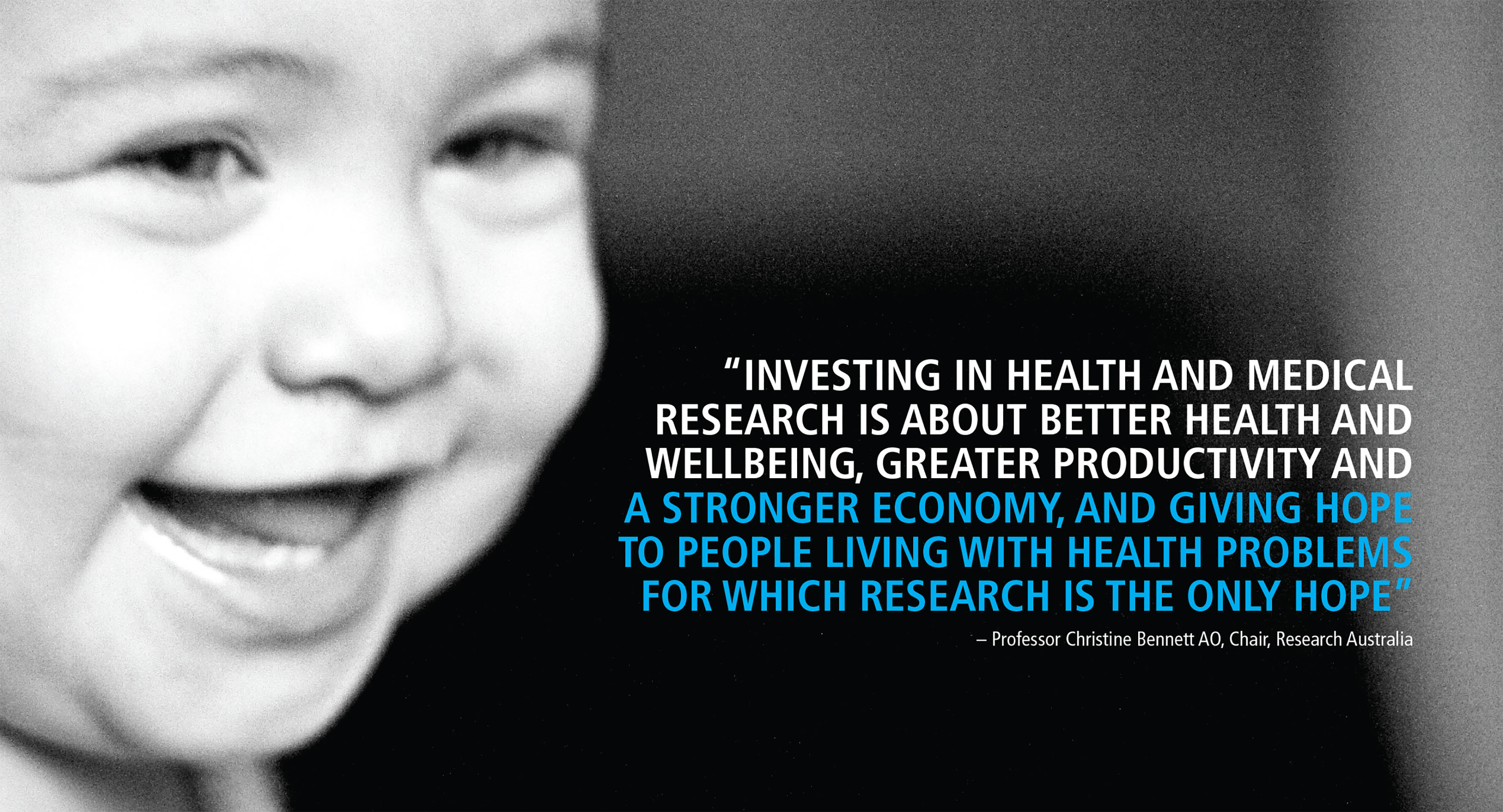Research Australia welcomes today’s announcement from Innovation and Science Australia (ISA), Australia’s independent science, research and innovation advisory board, calling for the Government to enhance the national culture of innovation to help drive the country’s prosperity.
We are pleased to note that the 2030 Plan, “Australia 2030: Prosperity through Innovation”, articulates the jobs of the future and skills we need to ensure Australia’s world class research can translate into global outcomes.
Research Australia has long stated that Australia has the potential to lead and create new markets by applying cutting-edge science and technologies to new, first in world applications that improve human health. However, to achieve or even entertain these possibilities, we have to be courageous and adapt our current approach to funding to reach “an economies of scale” ideal. This includes funding for areas such as machine learning and artificial intelligence, robotics and automation, high performance computing, and of course genomics and epigenetics.
While there are some questions about the Plan’s detail, Research Australia looks forward to working through them with our membership and the Government.
Research Australia is particularly pleased to see that many of the recommendations made in our June 2017 submission to ISA in response to the 2030 Strategy Issues Paper were adopted in the report, specifically the focus on frontier technologies and embedding research in Australia’s health system.
30 recommendations
The Plan includes a total of 30 recommendations to the federal Government. Importantly, it pinpoints Genomics and Precision Medicine as an ideal first national mission to deliver health and innovation benefits for all Australians. This links directly to Research Australia’s calls to use the Medical Research Future Fund (MRFF) to support research at the medical frontiers such as this.
The Plan suggests that this national mission could be funded from the MRFF, at a cost of $500 million over the initial five years. With a program that is as translational as this, seeking to integrate new research into healthcare, there is the potential for a real tension between research and innovation funding and healthcare budgets. The 2030 Plan recognises the importance of taking a considered approach to the design of the program and its governance to ensure the mission can deliver on its promise.
No increase in expenditure
Of major interest is the role of R&D as a key driver of innovation. While noting that Australia lags behind its global peers in gross expenditure on R&D, the Plan does not propose any increase in Government funding as a percentage of GDP, beyond existing funding programs and commitments. Instead, it is relying on the redirection of existing programs to provide more effective incentives to increase business R&D as a means of closing this gap.
While Research Australia accepts that there are areas where the Government’s R&D expenditure could do more to incentivise private sector investment, the question remains whether redirecting existing funds will be enough to achieve the required transformation in our economy. There is the risk that underinvestment means we miss the opportunities presented by the emerging fields of science and new technologies.
The Plan also favours more direct support for industry rather than tax-based measures such as the R&D Tax Incentive. It proposes implementing the 2016 review of the R&D tax Incentive with two amendments. The application of a research intensity threshold, proposed by Research Australia is welcomed however we remain concerned about the overall R&D Tax Incentive Reforms until there is further information about how the money would be redirected.
Overall
The Plan focuses on the role science and research can play in making a real impact on the Australian population and economy. We are particularly pleased to see a spotlight on genomics and its place in providing improved health and medical research outcomes.
Australia has a strategic research advantage and a real opportunity to position health and medical research as a significant driver of a healthy population and economy. The Plan provides an opportunity to maximise this advantage and we now await the Government’s response.



